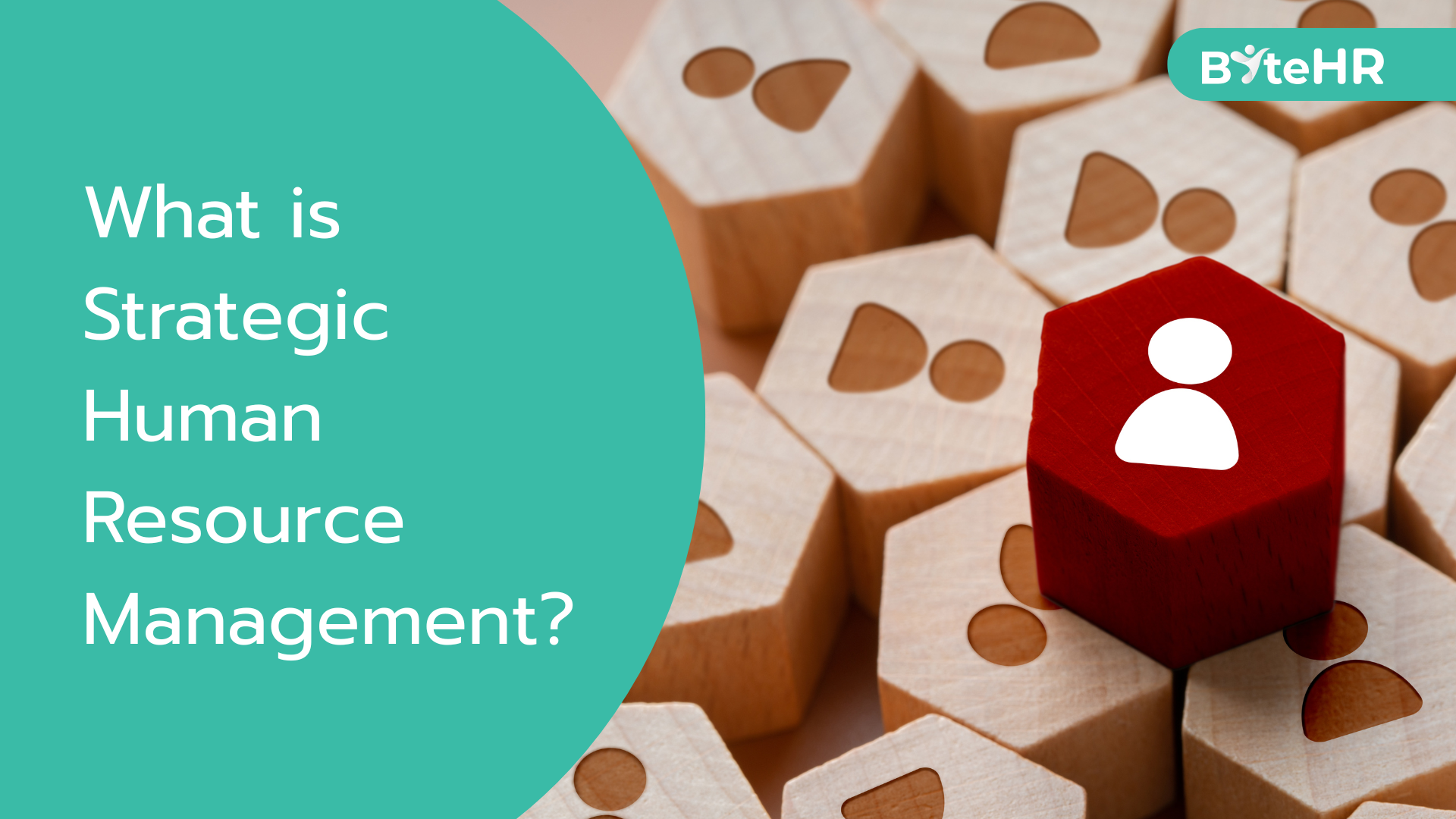
What is Strategic Human Resource Management?
Strategic Human Resource Management (SHRM) is a modern approach that aligns HR strategies with business goals. It moves beyond traditional administrative HR, positioning human resources as a key driver of organizational success and competitive advantage.
What SHRM involves?
Integrated Approach: SHRM is about making sure HR works hand-in-hand with the company's overall business objectives. It's not just about paperwork; it's about people driving the business forward.
Strategic Partner: In today's fast-changing business world, especially in places like Malaysia, SHRM turns HR into a partner that actively contributes to growth and sustainability, rather than just a support function.
Goal-Oriented HR: It's all about using HR to help the company hit its strategic targets. This means crafting HR policies and systems specifically designed to attract, develop, motivate, and keep the employees who will make the organization successful.
Long-Term Vision: Every HR decision and initiative directly supports the company's long-term vision and competitive edge.
Strategic HRM vs. Traditional HR Management
The core difference between Strategic Human Resource Management (SHRM) and Traditional HR lies in their scope, focus, and level of integration with business objectives.
Here's a breakdown:
Traditional HR Management:
Scope: Reactive and administrative.
Focus: Compliance, record-keeping, and day-to-day operational tasks.
Employee View: Employees are seen as costs to be managed.
Decision-Making: Relies on intuition and historical practices.
Strategic HRM:
Scope: Proactive and business-oriented, anticipating future needs.
Focus: Aligning human capital with overall business goals to drive success and competitive advantage.
Employee View: Human capital is recognized as valuable assets requiring investment and development.
Decision-Making: Emphasizes measurement and analytics, using data-driven insights for informed decisions.
Strategic HRM in a Dynamic Environment
As workforces become increasingly diverse, educated, and globally connected, Strategic Human Resource Management (SHRM) is crucial for organizations to thrive.
Here's why SHRM is vital for navigating a dynamic business landscape:
Optimizing Workforce Potential & Addressing Challenges:
Maximize diverse workforce potential.
Talent retention: Keep valuable employees engaged.
Skills gaps: Bridge discrepancies between current and future skill needs.
Intergenerational workforce management: Leverage contributions from all generations.
Mitigating Organizational Risks:
Avoid losing top talent to competitors.
Prevent decreased employee engagement and productivity.
Alignment with Evolving Business Imperatives:
Align HR strategies with overarching business goals and market demands.
Maintain competitiveness and drive sustainable growth amidst economic trends and industry advancements.

Key Components of Strategic Human Resource Management (SHRM)
Effective Strategic Human Resource Management (SHRM) relies on several interconnected components, all designed to ensure an organization's human capital aligns with its strategic goals:
Strategic Workforce Planning:
Systematically analyze current and future talent needs.
Forecast skill requirements and identify talent gaps.
Develop strategies to acquire, develop, and retain necessary capabilities.
Talent Acquisition and Management:
Goes beyond hiring; includes employer branding, recruitment, and onboarding.
Aims to attract and retain high-quality employees consistently.
Focus on cultural fit, growth opportunities, and organizational values for best results.
Performance Management Systems:
Ensure individual/team contributions align with organizational objectives.
Involve continuous feedback, development planning, and recognition.
Boost engagement and productivity beyond annual reviews.
Learning and Development Initiatives:
Strategically design programs to build future-ready capabilities.
Includes technical skills, leadership development, and change management.
Enable organizations to adapt to evolving market conditions.
Compensation and Benefits Strategies:
Carefully designed to attract, motivate, and retain talent while managing costs.
Consider market competitiveness, internal equity, and performance linkages.
Maximize return on human capital investments.
Successfully Implementing Strategic HRM
To successfully implement Strategic Human Resource Management (SHRM), companies need a clear roadmap and commitment from the top down. It's about integrating HR into the core business strategy, not just treating it as an administrative function.
Here's how companies can effectively implement SHRM:
Secure Leadership Commitment:
Gain full buy-in from senior management.
Ensure leadership understands and champions the strategic HR vision.
Obtain necessary resources and authority, emphasizing SHRM as a business imperative.
Conduct Comprehensive Organizational Assessments:
Evaluate current HR capabilities, processes, systems, technology, and staff competencies.
Identify strengths, weaknesses, and improvement opportunities to establish a baseline.
Develop Detailed Implementation Roadmaps:
Create clear roadmaps with specific timelines, milestones, and success metrics.
Guide systematic progress towards strategic HR goals.
Factor in organizational change management to address potential resistance.
Leverage Technology Strategically:
Adopt HR analytics, cloud-based systems, and automation tools.
Ensure technology supports strategic objectives, not just digitizes old processes.
Enhance efficiency and data-driven decision-making.
Build Internal HR Capabilities:
Invest in your HR team's skills and knowledge.
Provide training and development to upskill existing staff.
Consider hiring professionals with strategic HR experience and business acumen.
Ensure the HR team has the necessary skills for effective implementation.
Strategic Human Resource Management (SHRM) is crucial for Malaysian organizations aiming for sustainable competitive advantage. By transforming HR into a strategic business partner, companies can fully leverage their human capital for superior results.
Implementing SHRM requires commitment, but the benefits including improved employee engagement, enhanced organizational agility, and stronger performance make it a worthwhile investment. As Malaysia's economy evolves, SHRM will be essential for success, giving early adopters a significant edge over those sticking to traditional HR.
For more on HR development, tax knowledge, and tips for employees and entrepreneurs, follow ByteHR. If you're considering HR software, contact ByteHR for a free consultation at 036 419 5276 or salesmy@byte-hr.com.

